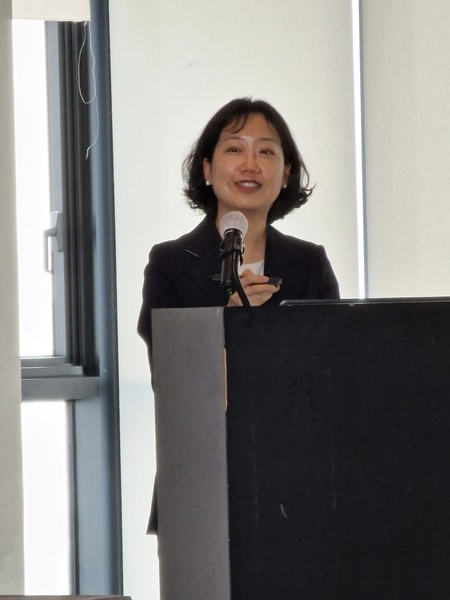The Korean Society of Hematology has called for an expansion of the reimbursement criteria for coagulation factor preparations used in hemophilia A prevention and maintenance therapy.

Hemophilia is a genetic bleeding disorder caused by a deficiency in clotting factors, with hemophilia A patients lacking or having a deficiency in clotting factor VIII accounting for approximately 70 percent of all cases in Korea.
As life expectancy for patients with hemophilia A increases, emphasis is being placed on individualized therapy based on pharmacokinetics (PK) for each patient's specific physical activity.
According to the World Federation of Hemophilia (WFH) guidelines, the standard therapy for severe hemophilia patients involves periodic administration of coagulation factor or hemostatic agents as a preventive therapy, with individualized and customized therapy based on each patient's bleeding phenotype, joint status, pharmacological characteristics, and preferences.
The current reimbursement criteria for preventative for severe hemophilia patients in Korea is based on standard half-life products, with a range of 20-25 IU/kg, and is approved for up to 12 treatments per month. Extended half-life products with the same dosage range are covered for up to eight treatments per month.
However, during a media session sponsored by Takeda Korea on Thursday, Park Young-shil, director of general affairs at the Hemophilia Working Party of the Korean Society of Hematology (KSH), stressed that the present criteria were insufficient.
"For standard half-life products, which require dosing every other day for prevention, patients should receive 3.5 treatments per week, but the insurance only covers three treatments per week, which is insufficient," Park said. "Additionally, the dose is lacking compared to the 20-40 IU/Kg approved by large clinical studies."
For extended half-life products dosed twice a week, the approved dosage range is 40-50 IU/kg, but the coverage criteria are no different from that of standard half-life products, which is 20-25 IU/kg, thus limiting appropriate prevention therapy, Park added.
The physician stressed that there is a need for individualized preventive therapy based on pharmacokinetics (PK) measurement results and the patient's characteristics."
According to Park, the traditional method of maintenance therapy involved ensuring that the coagulation factor activity level exceeded the severe criteria of 1 percent, but recent studies have shown that individualized preventive therapy based on PK is more effective, as the bleeding pattern and PK response vary according to each patient's physical activity level.
"While the National Health Insurance Service (NHIS) covers preventative therapy for severe hemophilia patients who have less than 1 percent of the coagulation factor in their blood to reduce the risk of bleeding and associated complications, the criteria fall short of meeting the treatment goals," she said.
The hemophilia specialist stressed that patients with severe hemophilia are still at a high risk of natural bleeding, even without external trauma, and repeated bleeding in joints or muscles can cause complications such as arthritis and can lead to serious disabilities over time.
"In the past, hemophilia treatment primarily involved the administration of hemophilia drugs in controlling bleeding when it occurred," Park said. "However, as preventative therapy has now become the standard of care for treating severe hemophilia, maintaining clotting factor levels above a certain threshold by administering an appropriate dosage at regular intervals can reduce the risk of natural bleeding and associated complications."
As a result, Park said that the Korean Society of Hematology submitted a revision proposal for the reimbursement standards for hemophilia drugs to the Korea Health Insurance Review and Assessment Service (HIRA) last fall and is waiting for the results.
"While it is clear that the reimbursement standards for hemophilia drugs have improved significantly compared to the past," Park said, "The domestic treatment environment has changed significantly, and to achieve optimal effects for patients and we believe that changes to the reimbursement standards are necessary."
Although several stages remain until the final reimbursement expansion, HIRA has shown a positive response, Park added.
Park explained that the proposed revision to the reimbursement standards is divided into two main areas -- increasing the dosage and frequency of administration.
"Specifically, the society requested that the number of doses that can be administered in a single dose be increased from the current 20-25 (IU/kg) to a maximum of 50," Park said. "The proposed change provides flexibility in dose escalation based on patient condition, with 20-40 for the standard half-life formulation (20-50 for children six years and younger) and 40-50 for the extended half-life formulation."
The hemophilia expert also stressed that the KSH proposed expanding the number of monthly doses patients can receive.
Under the current benefit, patients can visit the clinic once or twice a month and receive a total of 10 doses of the standard half-life formulation, and severely ill patients are allowed up to 12 doses.
For extended half-life formulation, patients can receive a total of seven doses (eight doses for severely ill patients per month.
The physician stressed that the society's position is that the maximum range of reimbursement standards should be aligned with the approved usage guidelines.

